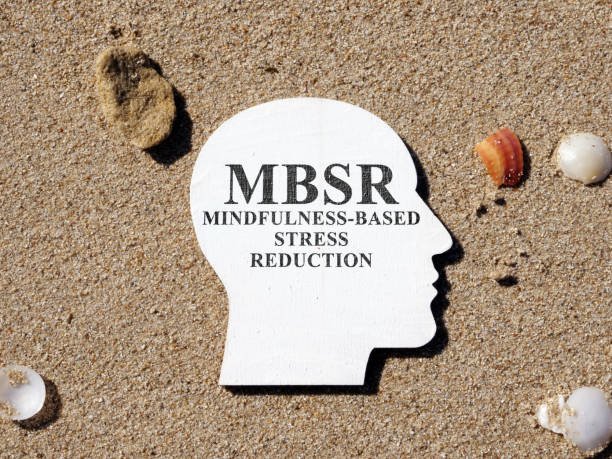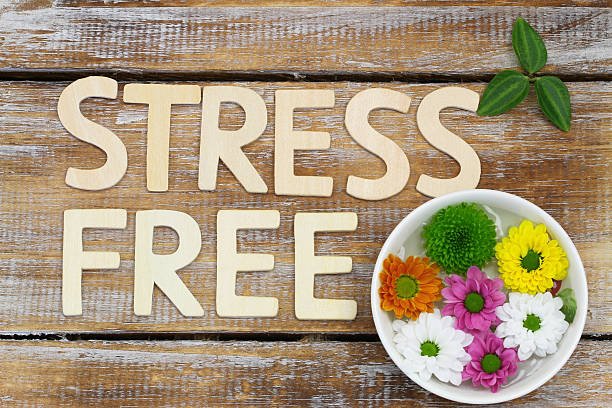Let’s be honest. Life in 2025 feels like a pressure cooker. We’re juggling demanding careers, navigating complex relationships, and swimming in a 24/7 digital stream that never shuts off. The result? A pervasive sense of being overwhelmed, chronically stressed, and fundamentally burned out. We try everything to cope—vacations that end too soon, productivity hacks that add more to our plate, and distractions that only offer fleeting relief.
But what if the solution wasn’t about adding more, but about fundamentally changing your relationship with the stress that’s already here?
Enter Mindfulness-Based Stress Reduction (MBSR). Far from just another wellness trend, MBSR is a structured, evidence-based program that has been scientifically studied and proven for over four decades to help people manage stress, anxiety, chronic pain, and the general chaos of modern life. It’s not a quick fix or a magic pill; it’s a practical training program for your mind that equips you with the skills to navigate life’s challenges with greater calm, clarity, and resilience.

Table of Contents
What Exactly is MBSR? More Than Just an App
In a world of 5-minute meditation apps, it’s easy to misunderstand what MBSR truly is. MBSR is not just “meditating”; it is a comprehensive, 8-week educational program designed to teach you how to integrate mindfulness into your everyday life.
The program was developed in 1979 by Jon Kabat-Zinn, Ph.D., at the University of Massachusetts Medical School. His groundbreaking idea was to take the core principles of mindfulness meditation—traditionally rooted in Buddhist practices—and present them in a completely secular, scientific, and accessible format. He wanted to see if this intensive training could help patients who weren’t responding to traditional medical treatments for chronic pain and stress-related illnesses.
The results were a game-changer. Patients reported significant reductions in pain, anxiety, and depression. This success launched a wave of research and established MBSR as a respected, evidence-based approach in mainstream medicine and psychology.
The Core Philosophy: Befriending Your Mind and Body
The central goal of MBSR isn’t to eliminate stress. Stress is an inevitable part of life. Instead, the program teaches you to change your relationship with stress. It’s about learning to respond to challenges with awareness and intention, rather than reacting out of old, ingrained habits.
The key to this shift is cultivating non-judgmental awareness.
Imagine your thoughts and feelings are like weather patterns—some days are sunny, others are stormy. We often get caught in the storm, fighting the wind and the rain, which only makes us more exhausted. MBSR teaches you how to become the observer of the weather. You learn to notice the “storm” of an anxious thought or a painful sensation without getting swept away by it. You acknowledge it’s there (“Ah, anxiety is present”) with a sense of curiosity and kindness, rather than judgment (“I shouldn’t be feeling this!”). This simple, yet profound, shift in perspective creates space, and in that space, you find freedom and choice.
The 8-Week Journey: What to Expect in an MBSR Course
MBSR is a significant commitment, and that’s a key part of its transformative power. It’s structured like a university course for your inner life. Here’s what a standard 8-week program involves:
- Weekly Group Sessions: You’ll meet once a week for about 2.5 to 3 hours with a group of fellow participants and a certified MBSR instructor. These sessions include guided meditations, gentle mindful movement, and group discussions about the practice and its application to daily life.
- Daily Home Practice: This is the heart of the program. You’ll be expected to practice formal mindfulness exercises for about 45 to 60 minutes a day, six days a week, using guided audio recordings.
- The All-Day Silent Retreat: Typically held during the sixth or seventh week, this is a full day of guided, silent practice. While it might sound intimidating, most participants find it to be an incredibly profound and restorative experience, allowing them to deepen their practice without the distractions of daily conversation.
- A Secular, Educational Framework: It’s crucial to understand that MBSR is not religious. It is presented as a form of mental training, grounded in neuroscience and psychology, making it accessible and appropriate for people of all backgrounds and beliefs.
The Foundational Practices of MBSR: Your Toolkit for Resilience
The 8-week course systematically introduces you to several core mindfulness practices. These aren’t just techniques; they are tools you’ll have for the rest of your life.
The Body Scan Meditation
This is often the first formal practice taught in MBSR. It involves lying down and systematically guiding your attention through the entire body, from the tips of your toes to the top of your head. The goal is to notice any sensations—warmth, tingling, pressure, or even the absence of sensation—without judging them. This practice is incredibly powerful for reconnecting a mind that lives in the past or future with a body that is always in the present.
Mindful Movement (Gentle Yoga)
Don’t worry, this isn’t about becoming a pretzel. The gentle yoga and stretching in MBSR are done with a focus on awareness. You pay close attention to the physical sensations of your body as you move, noticing the limits of your stretches and respecting them. It’s a practice of inhabiting your body while in motion, helping to release physical tension and cultivate a kinder relationship with your physical self.
Sitting Meditation (Mindfulness of Breath, Sounds, Thoughts)
This is the practice most people associate with meditation. You sit in a comfortable, upright posture and use the breath as an anchor for your attention. When the mind wanders, you gently guide it back to the breath. The practice evolves to include awareness of sounds, bodily sensations, and even thoughts themselves, observing them as transient mental events rather than absolute truths.
Informal Mindfulness
Perhaps the most crucial part of MBSR is learning to bring mindfulness off the cushion and into your daily life. This means paying full, present-moment attention to routine activities—the taste and texture of your food as you eat, the sensation of warm water on your hands as you wash dishes, the feeling of your feet on the ground as you walk to your car. These informal practices bridge the gap between formal meditation and living a more mindful, present life.
The Science-Backed Benefits: Why MBSR Works
MBSR isn’t based on wishful thinking; it’s backed by thousands of scientific studies. Here are some of the well-documented benefits:
- Stress Reduction: Studies show MBSR can structurally change the brain, decreasing the density of the amygdala (the brain’s “fear center”) and increasing the density of the prefrontal cortex, which is associated with focus and emotional regulation.
- Management of Chronic Pain: MBSR is highly effective for people living with chronic pain. It works by changing one’s perception of pain. While the physical sensation may still be there, the practice reduces the emotional suffering and reactivity around the pain, leading to a higher quality of life.
- Reduced Anxiety and Depression: By teaching you to observe your thoughts without getting entangled in them, MBSR helps to break the cycle of rumination that fuels anxiety and depressive episodes.
- Improved Focus: In our age of distraction, MBSR is like taking your brain to the gym. It systematically trains your “attention muscle,” leading to better concentration and mental clarity.
- Enhanced Overall Well-being: Participants frequently report better sleep, improved relationships (as they become more present and less reactive), and a greater overall sense of life satisfaction.
Finding a Qualified MBSR Program
The integrity of the MBSR program depends heavily on the quality of the instructor. Because of its popularity, it’s important to find a certified teacher who has undergone rigorous training. The best place to start your search and learn more from the source is the UMass Memorial Health Center for Mindfulness, the institution where MBSR was born.
External Link Here: UMass Memorial Health Center for Mindfulness
When looking for a local or online course, don’t be afraid to ask about the instructor’s qualifications and their training lineage. A qualified teacher will be happy to share this information.

Conclusion: It’s Not a Quick Fix, It’s a Life Skill
Mindfulness-Based Stress Reduction is an investment in yourself. It requires time, commitment, and a willingness to explore your inner world with honesty and courage. It won’t make your problems disappear, but it will give you a new, more resilient, and more compassionate way to meet them. By learning to anchor yourself in the present moment, you discover a profound truth: you have an inner capacity for calm and wisdom that is far greater than the stress you face.
Your First Step on the Path
Feeling curious? You don’t have to enroll in an 8-week course today to get a taste of mindfulness.
Here’s your invitation: Find a quiet place where you won’t be disturbed for just three minutes. Sit comfortably, close your eyes, and simply bring your full attention to the sensation of your breath moving in and out of your body. When your mind wanders, gently guide it back. That’s it. That’s the beginning of the practice.
If you’re ready to explore further, use the resources mentioned above to find a qualified MBSR course online or in your community. Taking that step could be the beginning of a truly life-changing journey.